You Asked: Why are bigger TVs so much more expensive?
This week on You Asked: Contrast enhancer on TVs, yay or nay? Why are 83-inch OLEDs so much more expensive than 77-inch OLEDs? How do you know if you’re getting a 10-bit panel on your TV? Is TV brightness about to hit a power wall? And sound treatments versus auto EQ — which should come first?
Contrast enhancer on TVs: Yay or nay?
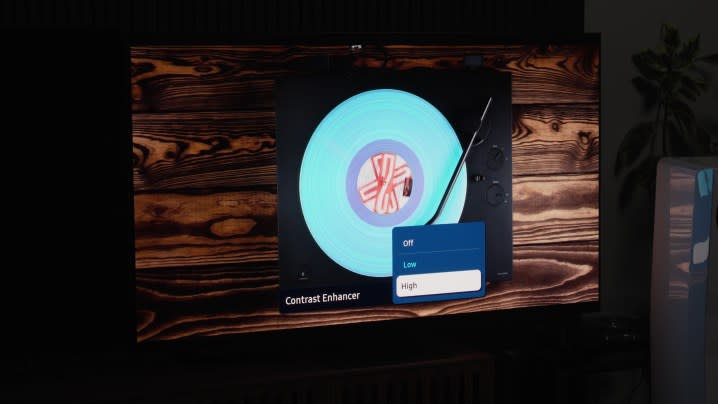
Isiah Narine asks: Should the contrast enhancer be turned on or off with Samsung TVs?
I doubt this was intentional, but the wording you used — specifically the word “should” — has the potential to make this a loaded question, which necessarily makes for a loaded answer.
Here’s the short answer: You, Isiah, should turn the contrast enhancer on if you like the way the picture looks better than when that feature is turned off. And if you don’t like the way it looks, then don’t turn it on.
If you are a purist, and you want to see the content looking as close as possible to how the creators intended it to look, then you should watch in a dark room, with the TV’s picture mode set to Filmmaker Mode or Imax Enhanced or Movie/Cinema mode. In this scenario, the brightness and contrast levels are going to be set in such a way that the content is supposed to look the way it was created to look when viewed in a dark room.
But if you are less interested in what the creator intended, you have a preference for a bright and punchy picture that technically strays for measurable accuracy, and you find that contrast enhancer gets you closer to the picture you crave? Then by all means, use it.
I will say that sometimes engaging a post-processing feature like contrast enhancer can create unintended side effects like noise or posterization, raised black levels in some areas, or even loss of bright highlights in HDR. It depends on the TV brand, and even the model within that brand — in this case, Samsung. So you may find yourself having to make a concession when you turn on contrast enhancer.
Why are big TVs so expensive?
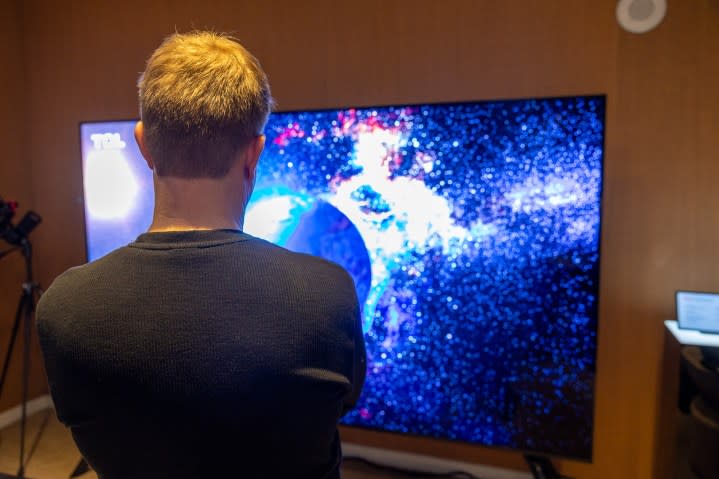
Rick Hall writes: Why is the 83-inch OLED priced so much more than a 77-inch. The price jump from 65 inches to 77 inches isn’t as bad, even though it’s a larger screen upgrade in calculated screen area.
Thanks Rick, and I totally understand why you may be baffled. I think we have a tendency to think that pricing should be linear or proportional, that we should be able to break down a TV’s cost per inch of screen real estate, and then extrapolate what a TV should cost based on that number. But, as you’ve discovered, that is very much not the case. There are two primary reasons why, based on what I’ve learned over the years from being in retail and speaking to these brands.
When it comes to luxury goods, the more premium the product, the more profit margin is built in. The price increase is not proportionate to the cost of production increase. If we compare a Toyota Highlander to a Lexus RX, you’ll find that they are very similar vehicles in many foundational ways. They’re both cars. But even as you add similar trim options and goodies, the Lexus RX is not only always going to be more expensive, but the upgrades are increasingly expensive. Thus, the price gap of the base models for each car may be, say, $10,000 — but the price gap between the fully loaded models might be closer to $30,000. I’m making those numbers up for illustration, but hopefully that makes sense. The more premium a product is considered to be, the more profit margin is going to be built in. You can sell five of a less-expensive model to make, say 40% profit, or you can sell just one of the premium model to make your 40% profit.
But there’s also a more practical reason. OLED TV panels are cut from one large piece of panel glass called “mother glass.” And the larger the panel you cut for first, the fewer TVs, monitors, or phone screens you can make — and sell — out of the rest. So, while you may be able to make two 65-inch OLED TVs and six 32-inch Ultra Wide OLED monitors out of one piece of mother glass, you don’t have a whole lot of glass left over if you cut a big 83-inch 16:9 TV panel out of that mother glass. Maybe a couple of 32-inch monitors at best. Since you’re making fewer products out of that one sheet, you gotta make up for it. So, you jack up the price!
How can you tell if you’re getting a 10-bit panel on your TV?

Rishubh K writes: Is there any true 10-bit panel in a commercially available TV? Or is everyone just using 8-bit and FRC? Why do the official sites of many TV brands not mention it specifically?
Just about every 4K OLED TV these days has a native 10-bit panel, and many, if not most, premium LCD TVs do as well. I think the reason why this isn’t a specification that brands are transparent about is a mystery, though I would speculate that a big part of it is that it could cause confusion for more folks than it helps. With that said, I could make confirming the native bit depth of a panel in my TV reviews a priority going forward. I could just make getting panel information a core part of the review process and toss it in the numbers for nit nerds section? Is it VA, IPS, or ADS, is it 10-bit or 8-bit plus FRC, etc. I don’t think that would add too much time or effort. So, if enough of you say you want it, I’ll just start doing it!
Is TV brightness about to hit a power wall?
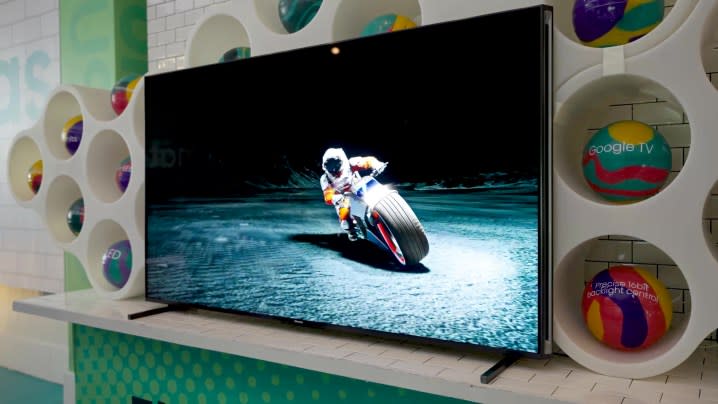
Leon Nguyen writes: Will a TV’s brightness eventually be limited by power from the wall? I’d imagine when TVs start hitting 1,000, 1,500, 2,000 nits at full 100% window, it could start tripping some breakers.
Hahaha. That’s a cool question, and I see why you’re asking. I would say that the use of capacitors — similar to how they are used in audio systems — could provide a big, short boost in power when needed. That could help a TV get brighter than the constant 120-volt, 15- or 20-amp circuits in a U.S. home would typically allow for. With that said, I have no idea what the current limit would be. That would take some calculating that I think may be beyond my capability.
Upgrading to a new Sony TV
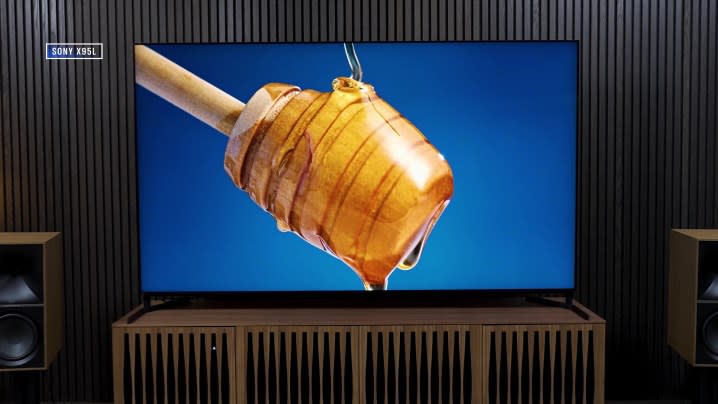
Phyllis and Brian Kelleher write: Our Sony Bravia XDL-46XBR2 LCD TV just finally died. Our dilemma is what Sony to buy now. Our room has a sliding door, four large windows, and two skylights, and an adjacent room with eight windows all receiving east/southeast light. So, I am now confused as to look at a mini-LED or an OLED model.
There’s a lot about your viewing habits that I don’t know, and having that information would help me to give you better advice. But given all your windows and the light that I imagine comes pouring in, plus the possibility that you, like many folks in the U.S., probably have your TV on for five or more hours per day? I’m going to say that I think you guys are going to do best with a mini-LED LCD TV.
You can still get a great deal on a TV. I’d suggest sticking with Sony. Look at the 2023 Sony X90L or X95L — both of those TVs will offer a dramatic improvement in picture quality over your recently deceased TV. They are both gorgeous, brighter than you’ve had, and more colorful. Most importantly, the overall look of the TV will feel familiar since you are staying in the Sony family.
Sound treatments vs. auto EQ: Which should come first?
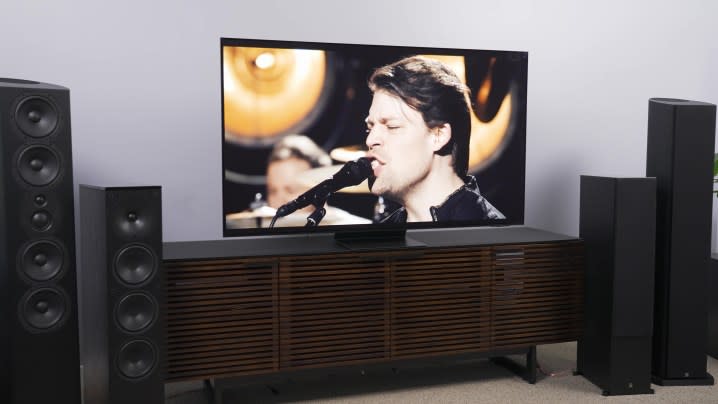
Steven Pythian writes: I’m about to set up my theater room, and I’m trying to figure out which comes first, the sound treatments, then Dirac, or run Dirac, then the sound treatments, then run Dirac again. I had a study done of my room acoustics by Vicoustic, letting me know what kind of sound treatments I would need, so I have those on hand.
Easy answer. Always, always, always do the sound treatments first. Trying to overcome physical acoustic issues with sound processing is a tough enough job already. Take care of your room first. This will give Dirac less trouble to try to iron out and, I suspect, leave it to do an even better job with what’s left.


